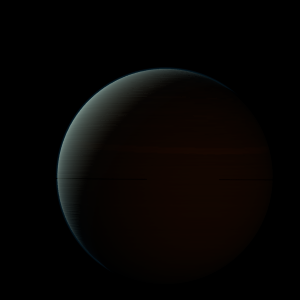|
|
Space Astro
|
Info for exoplanet "Burube Hinya"
| Scientific (actual) data |
|---|
| Name | OGLE-2019-BLG-0362 b |
| Planet status | Confirmed |
| Planet mass | 3.3 |
| Semi major axis | 2.7 |
| Discovered | 2022 |
| Updated | 2022-08-09 |
| Publication | Published in a refereed paper |
| Detection type | Microlensing |
| Mass measurement type | Microlensing |
| Star name | OGLE-2019-BLG-0362 |
| Right ascension | 263.47° |
| Declination | -24.81° |
| Star distance | 5830 |
| Star mass | 0.42 |
| Wikipedia article | OGLE-2019-BLG-0362 b |
Back
| |
| Fictional info (?) |
|---|
| Suggested name | Burube Hinya |
| Planet type | Large cold gas giant |
| It has the longest rotation period (445 days) of any planet in its solar system and rotates in the opposite direction to most other planets.
When viewed from Earth, this proximity to OGLE-2019-BLG-0362 means the planet can only be seen near the western or eastern horizon during the early evening or early morning.
Having almost no atmosphere to retain heat, it has surface temperatures that vary diurnally more than on any other planet in its solar system, ranging from 60°K (-213°C) at night to 805°K (532°C) during the day across the equatorial regions. |
| Atmosphere | Ozone | 55% |
| Ammonia | 44% |
| Hydrogen | 0.072% |
| Atmospheric pressure | 100 bar |
 |
| No known satellites |
| Google search for Burube hinya |
|
Website by Joachim Michaelis
|
|
|
|